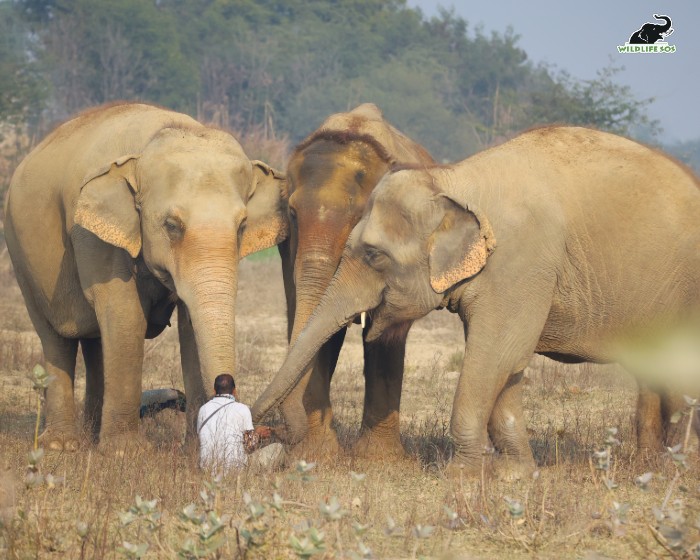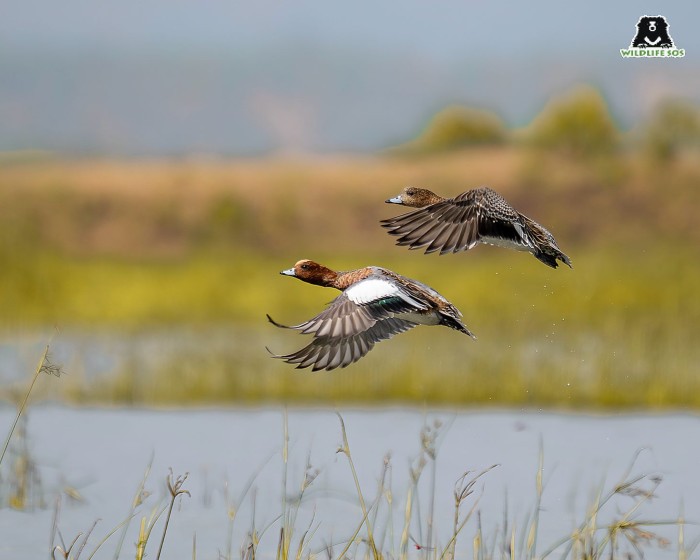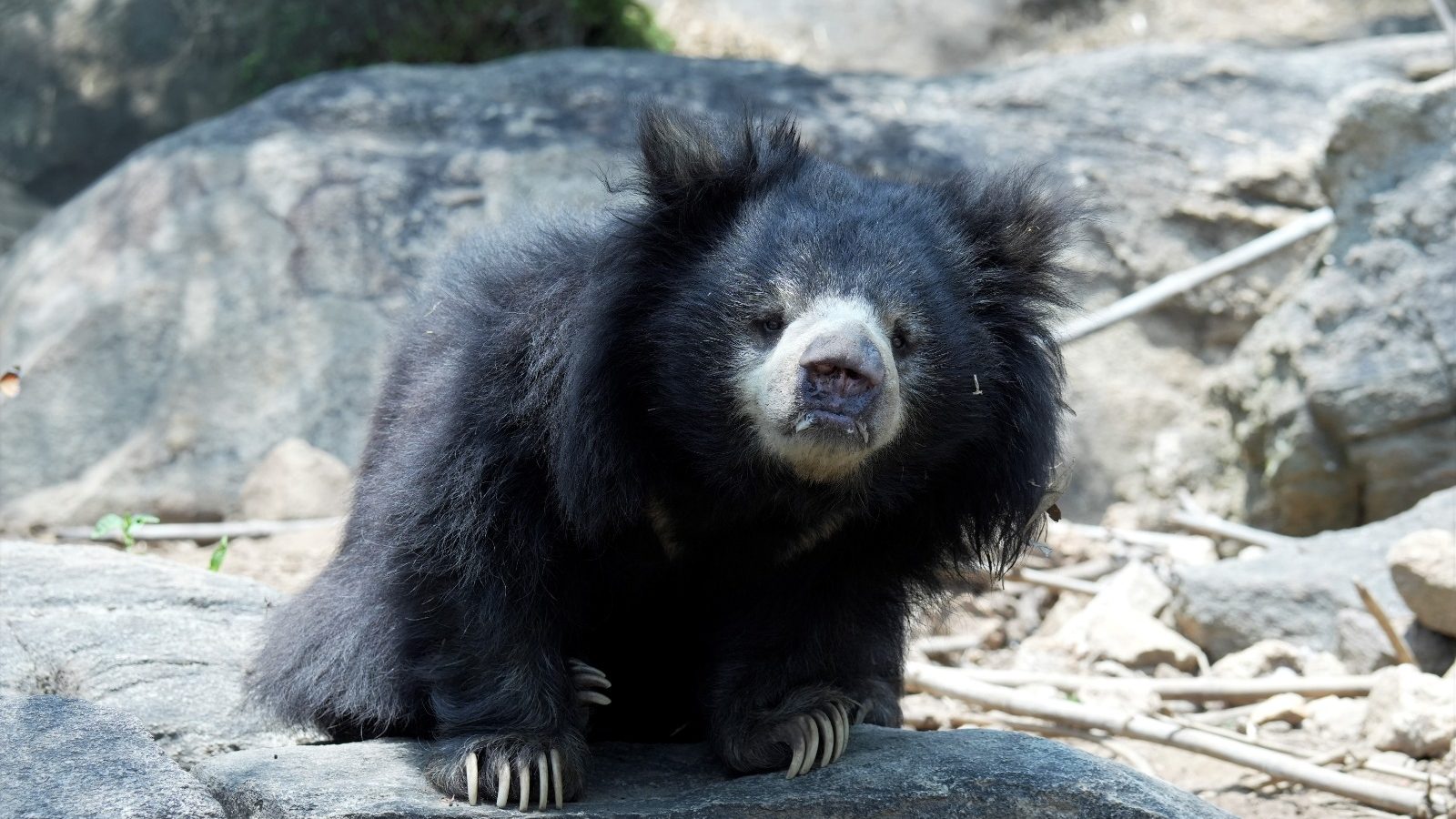We human beings are highly emotional creatures. We can explain what we feel through our facial expressions, body language and verbal communication. But have you ever wondered if animals too have feelings or emotions? If they do, do they show it? And if so, how? Since we cannot go up to them to ask them, the question of animals having emotions is difficult to answer. But it has prompted curious scientists to conduct interesting research on this. While we tend to anthropomorphize how an animal feels, studies have validated that animals do experience what we understand as fear and stress, grief and sadness, affection and joy, and much more.Let’s explore how animals portray their emotions in different situations.
Elephants
Elephants have complex auditory, olfactory and visual communication systems, and remarkable cognitive abilities. Their ability to understand and assess various kinds of encounters also makes them sensitive to pain, stress, empathy and joy as we humans feel. Our team at Wildlife SOS has been able to gauge certain sentiments by observing rehabilitated elephants in close range. Holly, a visually impaired resident elephant at Wildlife SOS Elephant Hospital Campus (EHC), was introduced to Kalpana after her rescue, and much to our surprise, the two instantly became friends. Kalpana’s warmth and protectiveness has been evident when she leads Holly using special, compassionate vocal cues on their daily walks. Another overwhelming instance noted by our team at the Elephant Conservation and Care Centre (ECCC) was when Asha passed away, and her companion Suzy let out loud, screeching trumpets. The blind elephant demonstrated the pain of losing her guardian and closest friend by standing beside Asha for hours after she was no more.

Birds
Ever heard of the game Angry Birds? Well, the name of this game indicates an aspect that is quite true to a bird’s nature. Birds display their rage mainly by rapidly flapping wings, fluffing up and shaking their feathers, and through loud calls. They also use their sharp claws and powerful beak to defend themselves. This reaction, however, is frequently associated with territorial behaviour, where a bird will attempt to safeguard their space — especially if this involves their nest and young ones — in case an animal or human acts as a potential threat. Intent birdwatchers are quick to claim that birds depict different kinds of emotions such as grief, fear and even love, but despite various bird species being studied, there has been no scientific consensus on this as yet. Birds have been, however, observed to share strong parental care responsibilities as they take turns in keeping the eggs warm, bringing food to the hatchlings, and guiding the fledglings to fly — all of which are signs of protection and affection.

Primates
Primates do appear to showcase a spectrum of emotions, according to research and observations. They frequently use vocalisations, body language, and facial expressions to convey their emotions. While a monkey may bare its teeth as a playful gesture, it does so with aggression as well. A gorilla can show if it is feeling content or upset through different vocal cues.
Rhesus macaques exist in social groups, and their relationships and bonding suggests emotional depth. They usually team up to fight against a foe, which reflects their protective attitude towards their kith and kin. They deeply honour their friendships, and show their endearment by grooming and taking care of one another. Mother monkeys are known to be overwhelmed by the death of their infant, which can be seen when they carry around lifeless babies for days together. Wildlife SOS recently adopted rescued orphans, Abu and Zoey, who have formed an incredible friendship based on their emotional resilience and the comfort they feel in each other’s presence.
Wildlife SOS’s Rapid Response Unit was also alerted about a captive grey langur’s reaction. The mother langur was heard letting out loud cries that sounded like mourning after she found her child dead. Not only this, the mother langur refused to eat any food, and her health showed a rapid decline. Her response to her child’s sudden death caused trauma that was heart-wrenching to witness, and can be closely related to how a human being would grieve.
Bears
Bears use different methods to communicate and convey their reactions. They use a variety of sounds, including growls, roars, huffs, and groans to intimidate other bears away from their territory or to establish their superiority in conflicts. Their anger or dominance is visible when they stand up on their hind legs or bow down to the ground while maintaining eye contact with another bear or a possible threat. These postures send the message that crossing boundaries could result in confrontation, and that they should back off. But bears can also express the feeling of joy! At Wildlife SOS rehabilitation centres, sloth bears, Asiatic black bears and Himalayan brown bears unveil their enthusiasm while playfully engaging in mock-wrestling with their companions, or exploring the treats stuffed inside the enrichments in their fields. They also let our caregivers know if they find their hammocks comfortable, and if they are placed at a height convenient for them to climb up on. If the ursine dozes off on them for prolonged hours, it’s a tick mark to both! Similarly, by closely observing their behaviour, vigilant caregivers are also able to note the mood, taste and preferences of bears, and can relay any unusual conduct to the veterinarians to keep track of their overall welfare.
Snakes
Like most animals, snakes too adopt survival strategies in order to secure themselves against threat, and are often misunderstood as being inherently aggressive. A snake’s first response to anything fearful is to rapidly escape and hide from danger.
In order to thwart any risk, snakes also coil up and hiss. A hiss indicates the snake’s distress and exasperation if it senses an untoward approach. A strike and bite are sure to follow such a scenario, which is also the result of constant stress. In an attempt to frighten a human or animal, snakes can also imitate strikes wherein they lunge forward with their heads to deceive the target.
While we are able to recall their untoward reactions, many of us are unaware of the underlying causes that instigate them. Snakes do not intend to harm humans unless it is provoked by threat. In case you sight a snake in your locality, the best reaction by you would be to not attack or attempt to capture it, but inform and seek professional assistance from the local wildlife authorities.
We have explored how animals like elephants, birds, primates, bears and snakes respond to various scenarios in manners that humans correlate with emotions. To read more of such interesting articles on wildlife, subscribe to our newsletter by clicking here.





